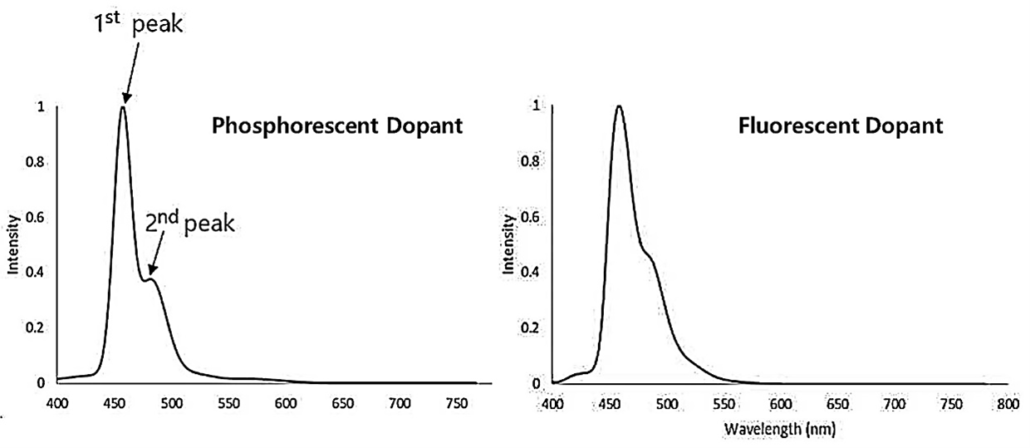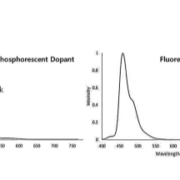Summary of LG Display’s Hybrid Phosphorescent Blue Tandem Public Patent
If we look at the contents of the recently published hybrid phosphorescent blue tandem patent, it is evaluated as a patent that can apply phosphorescent blue to product production at an early stage. This is because it uses a luminescent material that has been verified and can be mass-produced by a material company, and the current OLED deposition system optimized for mixed host can be used as is.
The main contents of the patent are that
– The phosphorescent emitting layer must be configured at the bottom, and in this case, the efficiency index (blue index) increases by 1.7 times compared to the fluorescent blue tandem. (If the phosphorescent emitting layer is located at the top, the efficiency index increases by only 1.4 times.)
– The thickness of the fluorescent emitting layer must be 60% or less of the phosphorescent emitting layer thickness.
– As shown in the figure below, the blue phosphorescent dopant spectrum must have a second peak intensity of 50% or less of the first peak intensity.
– The difference between the highest intensity wavelength of the phosphorescent dopant and the highest intensity wavelength of the fluorescent dopant must be 20 nm or less.
We look forward to seeing LG Display’s blue phosphorescent panel, which has completed product verification, at Display Week 2025.

Chang Wook HAN, VP/Analyst, UBI Research(cwhan@ubiresearch.com)


 2025 OLED Emitting Materials Report Sample
2025 OLED Emitting Materials Report Sample
